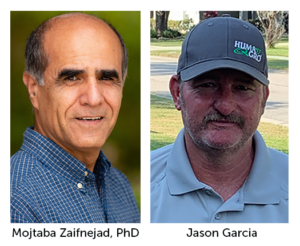Fertilgold® Organics, a brand of organic fertilizer products from Bio Huma Netics, Inc. (BHN) headquartered in Gilbert, Ariz., has achieved Organic Materials Review Institute (OMRI) listing for 21 initial products. Of these, 13 OMRI-listed liquid crop nutrition products are based on the company’s proprietary nutrient carrier, Micro Carbon Technology®, which carries nutrients to plants more effectively than traditional organic nutrition products.
OMRI-Listed Fertilgold® Organics products currently include:
- Fertilgold® N-5.5 (liquid: nitrogen)
- Fertilgold® NK (liquid: nitrogen and potassium)
- Fertilgold® K-6 (liquid: potassium)
- Fertilgold® B (liquid: boron)
- Fertilgold® Ca (liquid: calcium)
- Fertilgold® Co (liquid: cobalt)
- Fertilgold® Cu (liquid: copper)
- Fertilgold® Fe (liquid: iron)
- Fertilgold® Mg (liquid: magnesium)
- Fertilgold® Mn (liquid: manganese)
- Fertilgold® Mo (liquid: molybdenum)
- Fertilgold® Zn (liquid: zinc)
- Fertilgold® Micros I (liquid: a balanced mix of S, B, Cu, Fe, Mn, Mo, and Zn)
- Fertilgold® MicroHumic® (dry: humic/fulvic acid)
- Fertilgold® Powder (dry: humic/fulvic acid)
- Fertilgold® Greens (dry: humic/fulvic acid)
- Fertilgold® 1–3 mm (dry: humic/fulvic acid)
- Fertilgold® K Hume (dry: humic/fulvic acid)
- Fertilgold® 6 mm(-) (dry: humic/fulvic acid)
- Fertilgold® Double Play™ (liquid: soil-applied fungicide and nematicide)
- Fertilgold® Triple Play™ (liquid: foliar-applied insecticide, miticide, fungicide)
These products are currently available for sale to commercial organic growers in select states (check availability at https://fertilgold.com/shop/), and they will soon be registered and available throughout the United States and in several other countries. Additional products that are currently undergoing review for OMRI listing are in the categories of Soil Fertility, Macronutrients, Liquid Humic and Fulvic Acids, Biopesticides, and Surfactants.
Lyndon Smith, BHN President and CEO, stated, “For years, customers of our bestselling Huma Gro® crop nutrition and protection product line for conventional farming have been asking us to develop a fully organic product line that is also powered by our Micro Carbon Technology®. The folks on our product development team have done an outstanding job with creating the Fertilgold® Organics products, which we think will redefine organic crop nutrition. We are offering a full line of effective products that have been designed to deliver true organic nutrition exactly when, where, and how crops need it. Anyone familiar with the outstanding crop yield and quality results achieved by our Huma Gro® products on the conventional farming side is going to absolutely love what Fertilgold® Organics with Micro Carbon Technology® (for the liquid products) will do for their organic crops.”
More information is available on the Fertilgold® Organics Website (fertilgold.com), which will provide ongoing updates regarding new products, OMRI-Listed status for products, and state registration for each. Blog content will also flow out to followers on Fertilgold® Organics Facebook and Twitter social media channels.
Related Posts

The Huma Gro Farmer Podcast: Episode 8—Tank-Mixing Fertilizers and Other Agrochemicals – Blog

This Week in Ag #30
Labor Day signals the end of summer and ushers in the frolics of fall: football, pumpkin spice, UGG boots (well, maybe not in Arizona), hoodies, weenie roasts, and of course, harvest. When do farmers start harvest? For commodity crops, this is largely dependent upon the crop, the variety, geography, and the size of the farmer.


